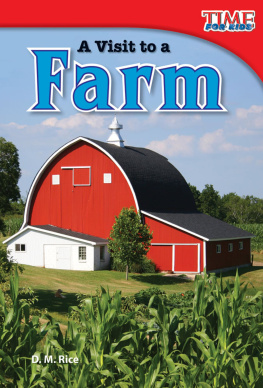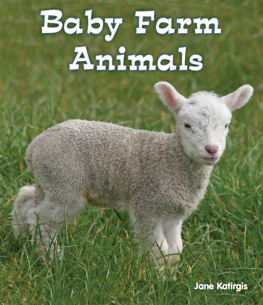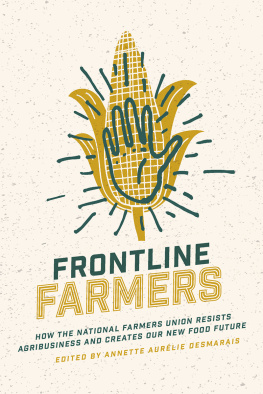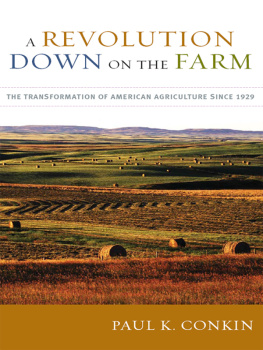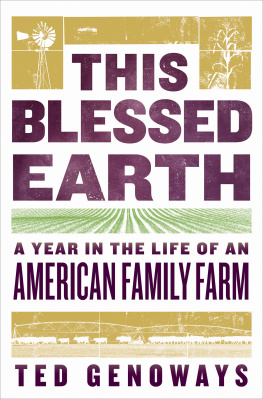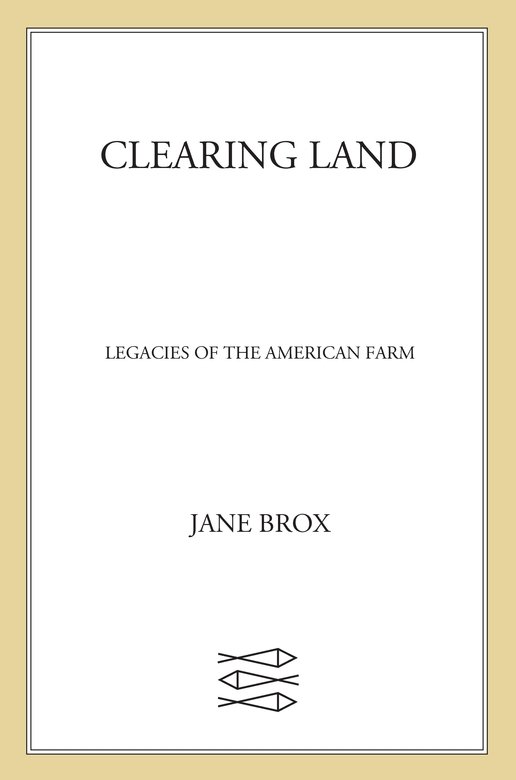Im grateful to the MacDowell Colony for providing a place to work during the years it took to complete this book. Gratitude, also, to Blue Mountain Center and Wellspring House. Many thanks to my friends for their support, in particular to Sarah Blake for her insight, and to Elizabeth Brown for an early reading of Squam and her patient attention to detail. Thanks to Deanne Urmy, always, for her continued faith, to Cynthia Cannell for her unstinting efforts on behalf of my work, and to Becky Saletan at North Point Press, whose intuition and precision have guided these pages all along.
Throughout Clearing Land I depended for agricultural information on Howard S. Russells A Long, Deep Furrow: Three Centuries of Farming in New England (Hanover, N.H.: University Press of New England, 1982) and his Indian New England Before the Mayflower (Hanover, N.H.: University Press of New England, 1980) as well as William Cronons Changes in the Land: Indians, Colonists, and the Ecology of New England (New York: Hill and Wang, 1983) and Natures Metropolis (New York: Norton, 1991). Larding the Lean Earth: Soil and Society in Nineteenth-Century America (New York: Hill and Wang, 2002) by Steven Stoll and New England Forests Through Time: Insights from the Harvard Forest Dioramas (Cambridge, Mass.: Harvard University Press, 2000) by David R. Foster and John F. OKeefe were also helpful. Jill Lepores The Name of War: King Philips War and the Origins of American Identity (New York: Vintage, 1999) was essential for my understanding of possession in both the colonial and Algonquin worlds. O. J. Reichmans Konza Prairie: A Tallgrass Natural History (Lawrence: University Press of Kansas, 1987) and Lauren Browns books, Grasses: An Identification Guide (Boston: Houghton Mifflin, 1979) and Grasslands: The Audubon Society Nature Guides (New York: Alfred A. Knopf, 1985), illuminated the prairie and salt marsh habitats. Andro Linklaters Measuring America: How an Untamed Wilderness Shaped the United States and Fulfilled the Promise of Democracy (New York: Walker, 2002) helped me to understand the settlement of the prairie. John Foggs Recollections of a Salt Marsh Farmer, edited by Eric Small (Seabrook, N.H.: Historical Society of Seabrook, 1983), made the salt hay harvest come alive.
I am grateful to Nathaniel Philbricks Away Offshore: Nantucket Island and Its People, 16021890 (Nantucket: Mill Hill Press, 1994) and Obed Macys History of Nantucket (Boston: Hilliard, Gray, 1835) for historical information on Nantucket. Barbara Blau Chamblerlains These Fragile Outposts: A Geological Look at Cape Cod, Marthas Vineyard and Nantucket (Yarmouth Port, Mass.: Parnassus Imprints, 1981) and From Cape Cod to the Bay of Fundy: An Environmental Atlas of the Gulf of Maine (Cambridge, Mass.: MIT Press, 1995), edited by Philip Conkling, were helpful for information on the geology of the island. The web site of the Nantucket Conservation Commission ( www.nantucketconservation.com ) provided me with information on the natural habitat of the Moors, as did The Nature of Massachusetts (Reading, Mass.: Addison-Wesley, 1996) by Christopher Leahy, John Hanson Mitchell, and Thomas Conuel. The Nantucket Historical Association was helpful with general research on the island.
Barbara H. Erkkilas Hammers on Stone: A History of Cape Ann Granite (Gloucester, Mass.: Peter Smith, 1987) helped with my understanding of nineteenth-century quarries. Im also indebted to the Cape Ann Historical Association and the museum at Halibut Point State Park, Rockport, Massachusetts.
Wilderness owes much to Into the Mountains by Maggie Stier and Ron McAdow (Boston: Appalachian Mountain Club, 1995), Logging Railroads of the White Mountains by C. Francis Belcher (Boston: Appalachian Mountain Club, 1980), Field Guide to the New England Alpine Summits by Nancy G. Slack and Allison W. Bell (Boston: Appalachian Mountain Club, 1995), and The Appalachian Mountain Club Guide to the White Mountains (Boston: Appalachian Mountain Club, 1992). For the descriptions of the logging camps I relied on A Logging Camp c. 1900 at the web site greatnorthwoods.org .
vii Our signals from the past: George Kubler, The Shape of Time: Remarks on the History of Things (New Haven: Yale University Press, 1962), 1718
1: INHERITANCE
3 Horseman, pass by : William Butler Yeats, Under Ben Bulben, in The Collected Poems of W. B. Yeats (New York: Macmillan, 1956), 34144.
4 However it is: Robert Frost, In Hardwood Groves, in The Collected Poems of Robert Frost (New York: Holt, Rinehart, Winston, 1964), 37.
19 Cultivators of the earth: Thomas Jefferson in a 1785 letter from Paris to John Jay, in Thomas Jefferson: Writings, ed. Merrill D. Peterson (New York: Library of America, 1984), 818.
20 Thats what I despise: John D. Fogg, Recollections of a Salt Marsh Farmer, ed. Eric Small (Seabrook, N.H.: Historical Society of Seabrook, 1983), 69.
2: AGRICULTURAL TIME
24 They sounded the harbor: William Bradford, Of Plymouth Plantation, 16201647 (New York: Modern Library, 1981), 7980.
24 That neither he nor any of his should injure: ibid., 8889.
25 how far these people were: ibid., 92.
25 of 100 and odd persons: ibid., 85.
25 stood them in great stead, showing them: ibid., 9495.
26 The soil is for general: William Wood, New Englands Prospect (Amherst: University of Massachusetts Press, 1977), 3335.
26 We found after five or six years: quoted in Howard S. Russell, Indian New England Before the Mayflower (Hanover, N.H.: University Press of New England, 1980), 119.
27 The Indians are not able to make use: quoted in Jill Lepore, The Name of War: King Philips War and the Origins of American Identity (New York: Vintage, 1999), 76.
28 The ploughmen ought to be men of intelligence: quoted in Georges Duby, Rural Economy and Country Life in the Medieval West, trans. Cynthia Postan (Philadelphia: University of Pennsylvania Press, 1998), 387.
28 a class of genuine full-time agriculturists: Plato, Timaeus and Critias, trans. Desmond Lee (New York: Penguin, 1977), 134.
29 the rich, soft soil: ibid., 134.
29 I have wondered: Rene Dubos, A Family of Landscapes, in The Norton Anthology of Nature Writing, ed. Robert Finch and John Elder (New York: Norton, 2002), 456.
30 Every one of our commune: quoted in Duby, 4078.
30 A man may travel many days: quoted in Russell, 204.
31 And to every person was given: Bradford, 16061.
32 they began now highly to prize corn: ibid., 160.
32 For now as their stocks increased: Bradford quoted in James Deetz and Patricia Scott Deetz, The Times of Their Lives: Life, Love, and Death in the Plymouth Colony (New York: Anchor Books, 2001), 79.
33 There is so much hay ground in the country: Wood, 34.
34 Our beasts grow lousy: quoted in John Stilgoe, Common Landscape of America, 1580 1845 (New Haven: Yale University Press, 1982), 182.
34 [They] took scythes out : John Teal and Mildred Teal, Life and Death of the Salt Marsh (New York: Ballantine, 1969), 24-25.
35 Rise free from care before dawn : Henry David Thoreau, Walden and Civil Disobedience (New York: Penguin, 1983), 254-55.
36 As for the Natiues : Roger Williams quoted in Andro Linklater, Measuring America: How an Untamed Wilderness Shaped the United States and Fulfilled the Promise of Democracy (New York: Walker, 2002), 28.





